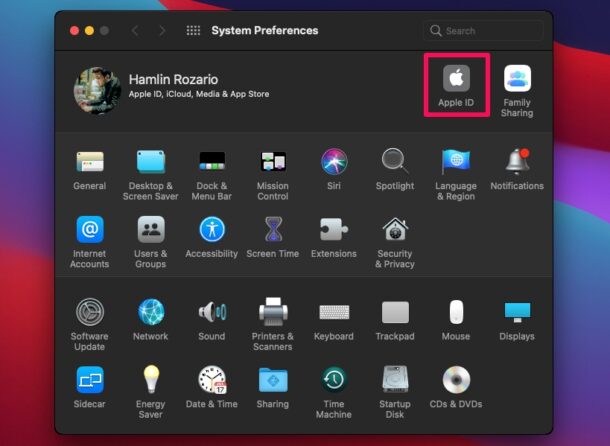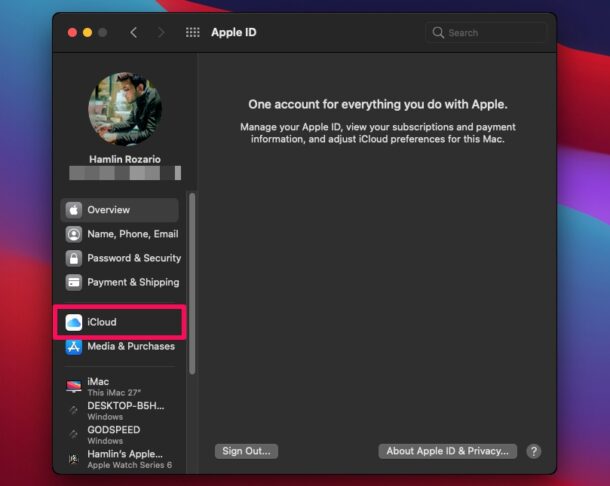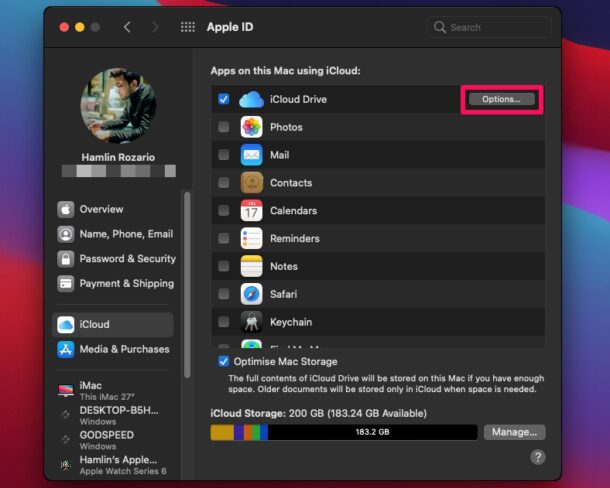How to Sync Desktop and Documents Folder to iCloud on Mac

Do you want to make sure the files stored on your Mac’s desktop and in the documents folder are accessible from all your Apple devices? You can set this up pretty easily on your Mac with the help of iCloud. To be more specific, it’s an optional iCloud Drive setting in macOS, that allows you to sync your Mac desktop and documents folders to iCloud.
Considering a lot of Mac users own other Apple devices too like the iPhone and iPad, they’d want to be able to access the files stored on their computers regardless of the device they’re using. Let’s say you have a work-related document stored on your desktop, but you want to work on it from your iPad. By allowing these files to be synced with the iCloud Drive, you can seamlessly switch between devices and continue to access and make changes to files that are stored on your Mac.
Some Mac users don’t like this feature and turn it off, but it can be a really useful feature if you don’t mind your stuff being stored in iCloud.
How to Use iCloud Desktop and Documents on Mac
You don’t need to have the latest software installed since this particular option is available on all recent versions of the operating system. However, make sure you’re signed in to your Apple account before you go ahead with these steps:
- Click on the Apple menu from the upper left corner of your screen and choose “System Preferences” from the dropdown menu.

- This will launch the System Preferences panel on your Mac. Click on the your name or “Apple ID” option located to the right of your Apple account name.

- Next, head over to the iCloud section from the left pane to access your iCloud settings.

- In this menu, you need to first make sure that the iCloud Drive option is checked. Now, click on “Options” to proceed further.

- Here, check the box next to “Desktop & Documents Folders” as shown in the screenshot below and click on “Done” to save your changes.

That’s pretty much all you have to do.
Now, it could take a few minutes for iCloud to sync all the files in your Desktop and Documents folders. But, once complete, you should be able to access the content on your other Apple devices like your iPhone and iPad using the built-in Files app. Just head over to the iCloud Drive directory of the Files app and you’ll find them there.
You can make any changes that you want to these files within the Files app and they will be automatically synced across all your devices including your Mac over iCloud within seconds. Don’t forget that you need to be signed in with your Apple account on all your devices to view these files.
In the iCloud Drive options menu, you can enable or disable the syncing feature for other supported apps that are installed on your Mac too. By default, iCloud sync is enabled for apps like Mail, TextEdit, Preview, etc.
We hope you were able to make use of the iCloud Drive syncing feature to access your local Mac files from your iPhone or iPad while you’re on the move. What are your overall thoughts on this handy feature? How often do you access your Mac files on other devices? Don’t forget to share your experiences and leave your valuable feedback in the comments section down below.







Thanks for the simple instructions. I was trying for an hour to get the desktop to sync until I read your article. Very much appreciated!
This is indeed useful BUT, icloud is just not secure enough for official/ confidential documents. What I would really like is a way of doing this directly between devices or a fully encrypted version of of what icloud offers. Progressively Apple has made local sync of even 2 macs let alone say a mac and an iPad harder, ostensibly for ‘security’ but also to close off alternatives to their cloud services. As well as convenience, it is always a good idea to have an off site backup but it really has to be fully encrypted for my use scenario
I do not use this feature because I don’t need to backup my entire Documents and Desktop folders. It amazes me that Apple makes this ‘feature’ of iCloud so rigid that I cannot simply select other folder(s) to sync via iCloud, such as a sub-folder of Documents. This lack of flexibility means I hardly use iCloud at all (beyond sharing mail, messages, and calendars).
I never saw the ‘desktop and docs’ folder. Does that mean it’s already being synced?
If only they would allow us to choose a sub folder to synchronize. I can’t fit 200GB on my 64GB iPad, but would like a small subset to be synchronized.
As far as I understand from Apple (about a year ago), using iCloud drive requires sufficient available storage on your iOS and OSX devices. For example if my M1 has 500 GB of files and I want to move them all onto iCloud and have them available on my phone then my iPhone also needs 500 GB of storage. It’s certainly possible that the tech support person had it wrong But there seems to be no easy way to choose not to download or make available for download certain files or directories. Would be pleased to find out this is not the case.
The problem is the cost. I have 10 years of photos, documents and music on my Mac. I have limited income and cannot afford more storage. I use a thumb drive instead.
Make sure you have an offsite/cloud backup somewhere (even a friend’s house, I guess), though. Just keeping everything a thumb drive lying around your house is not the safest option
Jim